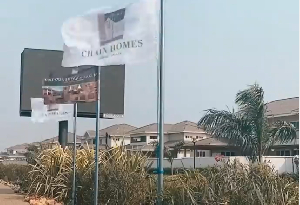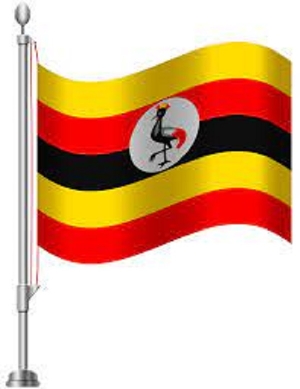I listened with rapt attention as she narrates her story. I could not hold back my tears as it rolled heavily down my cheeks.
10-year-old Amina , a little girl (migrant) from Kumbungu in the northern region who resides in Ghana’s capital town; Accra, tells me her parents abandoned her to fend for herself at a tender age of eight (8) years with the excuse they can no longer continue to cater for her needs due to poverty.
What touched my heart most was hearing her recounted the number of times she went to bed with empty stomach as a result of having no means of livelihood.
Amina maintained it took her only God’s intervention to meet Mariama Gomda, another Kayayei (returnee) who came to her rescue leading to her migrating safely to Accra where she now work as Kayayei for survival.
Her story is a kind that might move anyone to tears due to the magnitude of woes it exudes.
Unlike the 13-year-old Barikisu, migrating from Talensi in the Upper East Region, down south (Accra) to work as Kayayei has helped her a lot; to be able to save money and support her family back home in the north despite the numerous challenges she had to battle with working in the city as Kayayei.
These are just two out of thousands of those touching tales of many young female migrants who operates as ‘Kayayei’ in some cities of Ghana in search for better employment prospects and living conditions.
Kayayei are young women and girls who earn money by carrying loads on their heads in urban lorry parks and markets
The word Kayayei is made up of two words; the Hausa word ‘kaya’ which means load, luggage, goods or burden, and that Ga word ‘yei’ which means women and females.
These young female migrants predominantly originate from the three northern regions of the country i.e. the Northern, Upper East and Upper West Regions and their primary destinations are the markets of Greater Accra and Ashanti Regions.
The majority of these rural-urban migrants tend to leave their home state around the age of 13-17 and stay in their destination cities for a maximum of five years.
The rural to urban migration of young women (Kayayei) is mainly for economic reason although some peripheral reasons such as marriage and access to education are also sometimes part of the dynamics.
Kayayei represents a highly marginalized and vulnerable group of girls and women in Ghana. The work is precarious, they have no job security, are poorly paid, and live in terrible conditions.
They face stigma and discrimination from their employers and the public, and are highly vulnerable to sexual abuse.
However, the prospect of migrating to become Kayayei, to earn an income and send remittances home, often outweighs the potential cost of discontinuing education and living and working in unsafe environments.
According to the 2018 Kayayei situational report in Ghana released by 3 NGOs working in the country; Forward UK, PAYDP and ACDEP, the flow of young women and girls migrating to become Kayayei peaks twice yearly; during the dry season when there is little farming activity in the north and during the Christmas holidays when there is indeed increased marketing activity in Accra.
One of the new findings of the report equally revealed the city of Tamale is also increasingly becoming a Kayayei destination for women and girls from communities around the Tamale metropolis; Sanerigu, West Mamprusi, East Mamprusi, Savelugu-Nanton, Tolon and Kumbungu districts of the Northern Region.
Migration is defined as the movement of people across a specified boundary for the purpose of establishing a new or semi-permanent residence.
Out of many reasons why people travel all over the world including to avoid wars, natural disasters, cultural and religious factors, unfavourable weather conditions, poor economic conditions, lack of favorable policies, peace and freedom from dictatorship, poverty has been identified as the major cause.
Migration comes in various types’ namely rural-urban migration, urban-rural migration, urban-urban migration and international migration.
However, in the case of Ghana, internal migration has been a pervasive phenomenon for decades which witnessed movements of young women and girls aged between 10 and 35 years becoming Kayayei.
Internal migration and north-south migration in particular, has been prevalent in Ghana since the pre-colonial era.
80% of Ghanaian migrants stay within the country while 70% of these move from rural to urban areas, to seek jobs and other economic and educational opportunities.
More than half of the internal migrants in Ghana travel to Accra and the Ashanti Region. 75% of migrants originate from rural areas but, in contrast to expectations, migrants from the Upper East, Upper West and Northern Region only account for 10% of all internal migrants. Compared to other countries, the level of urban-to-rural migration in Ghana is high.
This suggests high levels of return migration and circular rural-urban migration.
The story of migration cannot be told without an end owing to the benefits many nations have derived from it amidst the serious issues it poses globally, according to some experts.
The UN Special Representative for International Migration, Louise Arbour touching on the issues equally expressed same sentiments about migration in detail adding, “it is capable of impacting the achievement of the Sustainable Development Goals(SDGs) from gender equality to urbanization, climate change and poverty reduction”.
Ghana as a country has had its fair share of the cake; benefited from immigrants whose human resource and expertise have been used towards development of its economy (brain gain) although the losses are much more damaging than the gain, hence the emphasis on the brain drain effects of migration.
But the question being posed so far is, against all odds, how is rural-urban migration in Ghana impacting people’s lives especially the unfortunate Kayayei in the country? Is it positive or negative?
In his view, Founder and CEO of Kayayei Youth Association of Ghana, Mohammed Isaac Salifu believes migration of most young women and girls from the north to the south to work as Kayayei in itself is a relief to them including their families back home since they’re able to work to get meagre amounts of money out of which they manage to some home for the upkeep of their families since they are poor.
But he disagrees with the whole Kayayei phenomenon due the ‘high risk’ involved.
He said unless government steps in with the appropriate interventions aimed at tackling the root cause of the head porters problems( push factors) which poverty has been identified as the main factor to ease their burdens, these unfortunate young women and girls will continue to suffer in the name of rural-urban migration.
For her part, the National Coordinator of Purim African Development Platform (PAYDP), an NGO working to protect women’s rights in Ghana, Mad. Aku Xornam Kevi holds the view that despite their woes, Kayayei are able to contribute their quota significantly to national development but unfortunately, due recognition has not been given to them due to their plight.
According to her, they represent majority of labour forces in country due to their numbers and they tend to be very helpful especially during voting and elections periods owing to their large numbers in urban centres which aids politicians in diverse ways.
Although she shared similar views raised by Mr. Mohammed Isaac Salifu, she wanted gov’t to find ‘sustainable alternatives’ to relieve their plights in order to discourage the young ones from migrating down south in order to avert being exposed to the ‘high risks’ of rural-urban migration and the Kayayei trade.
Mr. John Yamson, a Gender Analyst with the United Nations Information Centre (UNIC) Accra in his view did not did not rule out the possibilities of Kayayei getting meagre financial benefits which has been a pillar of support to them and their families back home due to the gains of rural-urban migration but questioned the ages of the young girls involved. According to him, the girls at the tender age of 9-17 years should be restricted from embarking on a journey to the south to look for greener pastures owing to the risks posed by migration and their work as Kayayei, instead be supported by government to go to school to shape their future.
In her opinion, Ms. Sylvia Lopez-Ekra, Gender Coordinator, International Organization for Migration (IOM) after weighing the negatives and positives(pros and cons) of the whole Kayayei phenomenon, she concluded by asking, “how can a system not very desirable under which these young female operate in as result of rural-urban migration be of any benefit to anyone”?.
Suggesting how the Kayayei situation can be improved, she called on government and its allies, NGOs and CSOs and well-wishers in the country to ensure that the young girls who are below 18 years be enrolled in school to study towards a brighter future while those who are above 18 years be provided with required access to services and protection during their migration journey and their stay in the urban centers while working as Kayayei.
It appears rural-urban migration in Ghana as far as young female migrants(Kayayei) are involved is a dicey situation encompassing virtues and faults which needs to be critically looked at since precious lives are at risk for a better future of our children and the development of our dear nation, Ghana.
Opinions of Thursday, 9 August 2018
Columnist: Joseph Kobla Wemakor















